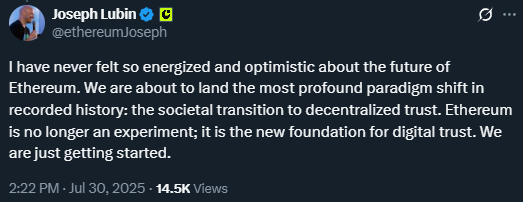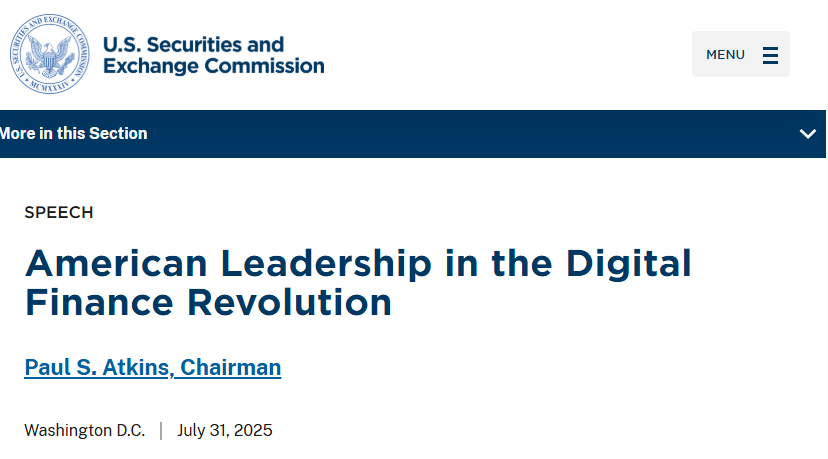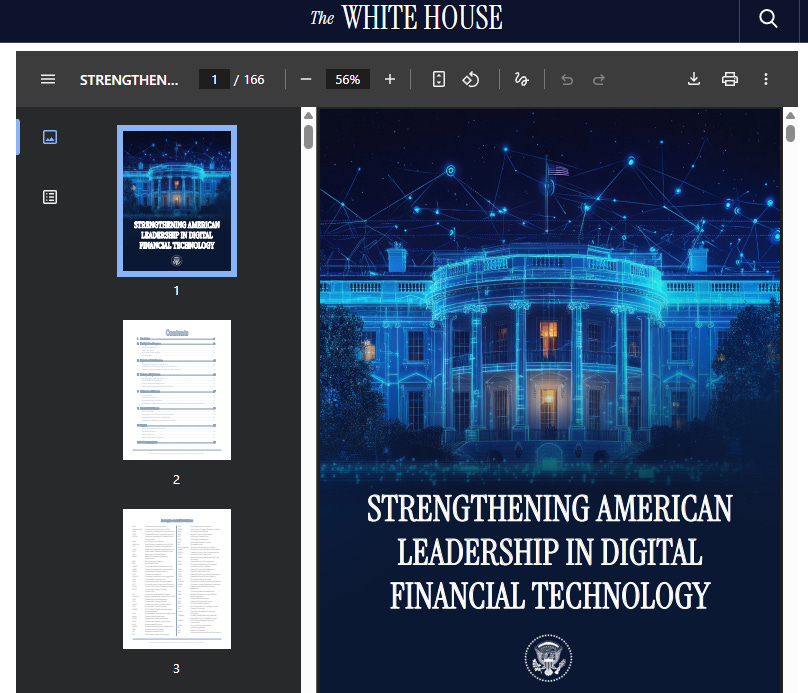Analysis: Robots, Crypto, and the Collapse of Old Systems
Ethereum, Washington, and Robots Walk Into a Future
Gm Fintech Architects —
I’m on holiday this week. It’s a beautiful sunny beach day. I hope you are having some version of a wonderful moment away from the chaos for yourself and your family, too.
Then I pick up the phone and everything floods back in. Things are so profoundly weird down the path of what we always hoped they would be. It is impossible to turn it off — the noise, the updates, the fear of missing out, the pitches and rejections, the deals. The whole world seems to be spinning in our direction, remembering nothing of the time when the Internet was new, online shopping and roboadvisors were risky, neobanks were European, Ant Financial was the next big thing, and blockchains were for nerds, not Presidents.
I am grateful for the beautiful mess we are in, this technological ball of human complexity and ingenuity. Thanks for being here with me. Today, I’ll quickly summarize three things that have stood out to me this week — something I used to do back at Autonomous Research in 2017 when I started writing every week on fintech, crypto, and AI — and we’ll call it a day.
Today we are diving into the following topics:
Summary: We highlight three transformative trends shaping 2025: Ethereum’s 10-year milestone, a sweeping U.S. regulatory pivot toward crypto, and early-stage momentum in humanoid robotics. Ethereum’s decade-long evolution has enabled global digital finance and spawned stablecoins, DeFi, and tokenized securities—now celebrated even at Nasdaq. The SEC and White House have reversed course, launching “Project Crypto” and passing the GENIUS Act to legitimize stablecoins, self-custody, and tokenization, while banning CBDCs and dismantling previous enforcement-first strategies. Finally, capital is now flowing into hardware robotics, particularly from China, as aging populations and economic strain signal long-term demand for mechanized labor. Together, these trends form a unified trajectory toward a more programmable, decentralized, and autonomous financial and technological future.
Topics: Ethereum, Joe Lubin, Consensys, Sharplink, Nasdaq, SEC, Paul Atkins, Hester Peirce, Trump, White House, CFTC, OCC, Ryan Selkis, David Sacks, Anthropic, Betterment, Stripe, Plaid, Coinbase, Galaxy Digital, Coreweave, xMaquina, Figure, Tesla
To support this writing and access our full archive of newsletters, analyses, and guides to building in the Fintech & DeFi industries, see subscription options below.
Our Ecosystem: AI Venture Fund | AI Research | Lex Linkedin & Twitter | Sponsors
Top 3 Things
(1) Ethereum’s Birthday
Ethereum is 10 years old.
You can like it or hate it. But like Bitcoin, Ethereum is special. It has ushered in a way of looking at the world and financial software that opened an enormous door of opportunity. Joe Lubin, an Ethereum co-founder, founder of Consensys, and Chairman of ETH treasury company Sharplink, rang the closing bell at the Nasdaq to celebrate.
Before blockchains, there was no real digital scarcity. There was no way to power a global system of digital money and assets that could compete with every fintech software provider across every single asset class in every country in the world, and still have more potential on which to deliver. It has taken a lot of grit to connect the dots between Crypto Kitties in 2015 and $100B+ of crypto dollars onchain in 2025, but clearly, this tech is just getting started.
Readers of this newsletter know me as an ETH bull, certainly not because of price, but because of the many years of operating work I committed to the Ethereum project. Today, we talk of stablecoins, treasury companies, regulatory tailwinds, global DeFi, and integration into agentic commerce. Before, we talked of NFTs and the Metaverse, digital assets and tokenized securities, automated market makers and DeFi lenders, enterprise blockchains, and supply chain tracking. Prior, we talked of ICOs and YouTube financial advisors, fiat onramps and the travel rule.
This change — this tsunami of transformation — is deliberate and amazing.
Fight it all you want. The punks are all wearing suits and running the money.
(2) The White House and SEC on Crypto
Crypto is Fintech and Fintech is crypto.
Both are the new finance.
The SEC Chairman, Paul Atkins, gave a speech yesterday on the role the United States is to play going forward. Here are the key points:
“Project Crypto" Initiative Launched: The SEC is launching a Commission-wide initiative to modernize securities rules and enable America's financial markets to move "on-chain" with blockchain technology. This represents a complete reversal from the previous administration's "regulation-by-enforcement" approach that drove crypto businesses offshore.
Presidential and Legislative Backing: Trump signed the GENIUS Act for stablecoin regulation and endorsed Congressional crypto market structure legislation by year-end. The President's Working Group released a blueprint report that Project Crypto will implement, with full White House support for making America the "crypto capital of the world."
Clear Crypto Asset Classification Framework: The SEC will develop bright-line rules to determine whether crypto assets are securities, allowing market participants to categorize them as digital collectibles, commodities, or stablecoins. Most crypto assets are not securities, and the agency will create purpose-fit disclosures and exemptions for those that are, including ICOs and airdrops.
"Super-App" Trading Platforms: Securities intermediaries will be allowed to offer broad product ranges under single licenses, including trading both crypto asset securities and non-securities on the same platform. This eliminates the need for multiple state and federal licenses that previously created regulatory barriers.
Modernized Custody and Self-Custody Rights: The SEC is updating custody requirements to accommodate crypto assets and affirming Americans' right to self-custodial digital wallets. The agency is moving away from restrictive frameworks like SAB 121 that limited custodial service options.
Decentralized Finance Integration: The SEC will create rules for truly decentralized on-chain software systems like automated market makers that operate without intermediaries. This includes protecting software code publishers and distinguishing intermediated from non-intermediated activity in
Tokenization of Traditional Securities: The SEC will provide relief for firms seeking to tokenize stocks, bonds, and other traditional securities within the United States. This represents a potential transformation of existing financial instruments onto blockchain infrastructure.
Innovation Exemption Program: A new exemption will allow companies to quickly launch innovative business models without fitting existing regulatory boxes. Firms can enter markets immediately while meeting principles-based conditions.
The White House has also published a new 166 page report called “Strengthening American Leadership in Digital Financial Technology”.
The first thing is just to gaze and appreciate the fact that this document exists.
Don’t worry, we are not going to make you read it. The closest thing it reminds us of is the Messari thesis documents that Ryan Selkis used to publish each year to summarize the entire industry. This is now being done by David Sacks and the Treasury on behalf of the White House.
The main takeaways are in the back sections that contain the recommendations for how the executive agencies are meant to implement policy around these issues. We highlight the main points below:






